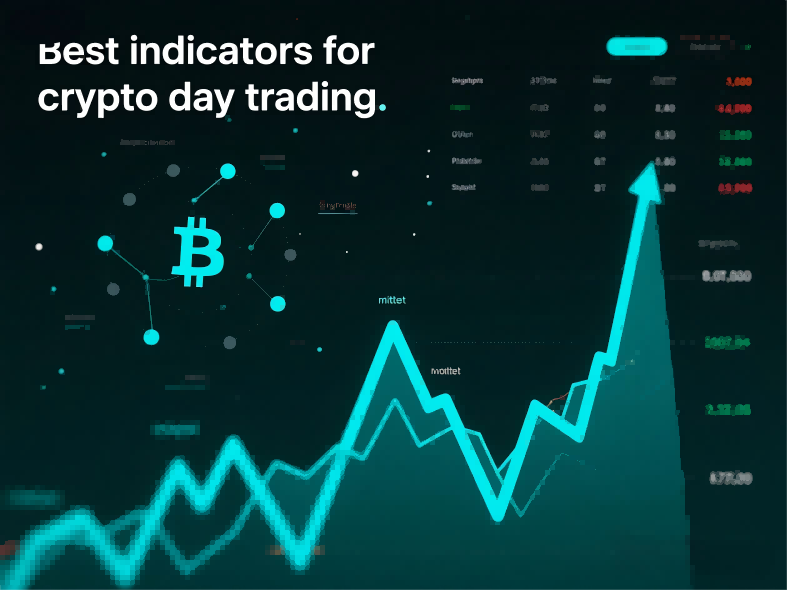Catch the trends, ride the waves—your crypto day trading game just got smarter.
Day trading crypto isn’t for the faint of heart. One minute you’re up, the next you’re staring at a sea of red. The difference between profit and panic? Reliable indicators. The right tools don’t just predict price movements—they give you the confidence to act fast.

Crypto moves at lightning speed. Unlike stocks, the market never sleeps, and volatility is the name of the game. That’s where technical indicators come in. They’re like your trading co-pilot, helping you spot trends, reversals, and entry points before the crowd catches on.
Think of it like driving: you wouldn’t rely solely on instinct in heavy traffic—you’d check your mirrors, GPS, and speedometer. Trading’s no different. Indicators are your dashboard, keeping you informed and in control.
RSI measures whether an asset is overbought (too expensive) or oversold (too cheap) on a scale of 0 to 100. A reading above 70 suggests a potential pullback, while below 30 could mean a bounce is coming.
Pro tip: In strong trending markets, RSI can stay overbought or oversold for longer than expected. Pair it with trend-following indicators for better accuracy.
Simple Moving Averages (SMA) smooth out price data to show the overall direction. Exponential Moving Averages (EMA) react faster, making them ideal for crypto’s rapid swings.
Traders often watch for the "Golden Cross" (50 EMA crossing above 200 EMA = bullish) or the "Death Cross" (opposite = bearish). These signals help confirm whether a trend has real momentum.
When the market’s quiet, Bollinger Bands tighten. When volatility spikes, they expand. Prices touching the upper band may signal overbought conditions, while the lower band can hint at a buying opportunity.
Real-world example: During Bitcoin’s 2021 bull run, repeated touches of the upper band signaled strong momentum—until the bands widened dramatically before the big correction.
The Moving Average Convergence Divergence (MACD) shows the relationship between two EMAs. When the MACD line crosses above the signal line, it’s a buy signal. Below? Time to exercise caution.
Crypto traders love MACD because it filters out noise. If RSI says "oversold" but MACD is still trending down, it might not be the best time to buy just yet.
Price can lie; volume rarely does. A price spike on low volume? Likely a fakeout. A breakout with heavy volume? That’s the real deal.
Watch for volume surges during key support/resistance breaks—it’s the market’s way of shouting, "This move has conviction!"
Indicators work best as a team. For example:
But don’t overcomplicate it. Too many indicators lead to "analysis paralysis." Stick to 2-3 that complement each other.
Crypto day trading isn’t about gut feelings—it’s about probabilities. The best traders use indicators to stack the odds in their favor while managing risk.
"Indicators don’t predict the future—they reveal the market’s habits. Learn them, and you trade with clarity, not hope."
Ready to put these tools to work? Start small, test strategies, and remember: even the best indicators need a disciplined trader behind them.
Spot trading is straightforward: you buy an asset like Bitcoin, Tesla stock, or gold, and you profit if the price goes up
Read MoreTrading has always carried an air of possibility. The idea of turning a well-timed decision into a life-changing profit a
Read MoreStart your CFD trading
Your All in One Trading APP PFD